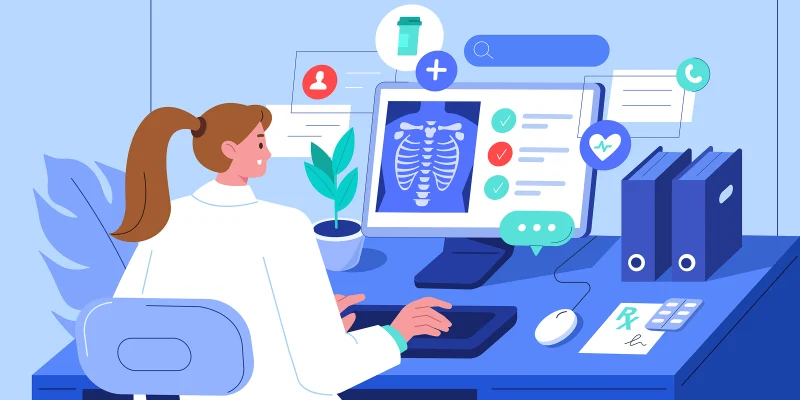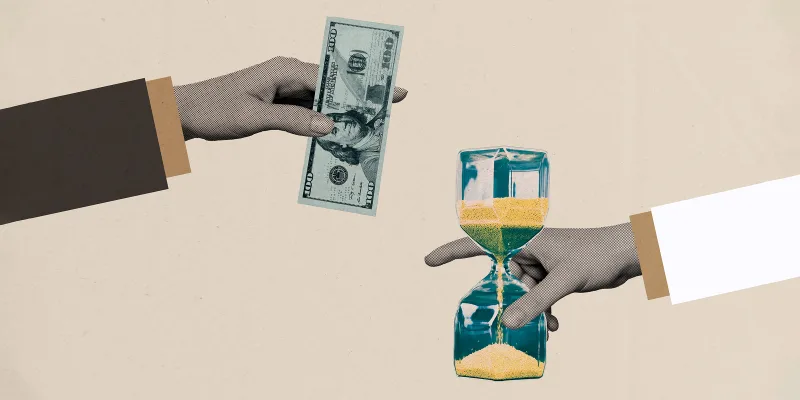Stress seems to be a given with being a physician or APP. We feel directly responsible for the health of our patients and – for many of us – tie our identities to a diagnostician, a healer, an advocate. We stay late to help resuscitate a critically ill patient at shift change. We help educate a patient on their antihypertensives while doing drop-off at school. We advocate – to put it nicely – in an insurer’s prior authorization case for a patient’s CT scan of a palpable head mass.
The emotions and thoughts associated with our work are one of the reasons that burnout rates and levels of mental illness are high in our practice of medicine. While mindfulness interventions have a positive effect on our perceived mental-wellbeing, these interventions are often time-consuming and recurring in a profession that is short on time already. But there are three simple and quick ways we can practice mindfulness.
Leveraging Your Pre-Work Rituals
We can leverage "pre-work rituals" that many of us do already to exercise mindfulness. Some of us bike to work or chat with colleagues just before shift. While the activity is different for everyone, these "rituals" are primed for stress-reducing mindfulness because they are routines we already use to prepare for stressful shifts.
Mindfulness involves being present — experiencing the moment you’re in — and being an accepting observer of those experiences, thoughts, and emotions. For example, my pre-shift ritual is a cup of hot, black coffee that I either buy or brew myself. I am being present as I smell and taste its sour and sweet parts, like an orange. I feel warmth as I drink and often feel content to enjoy the taste of the coffee. I’m observing the moment, accepting whatever feelings or experiences are occurring.
However, it's natural for our mind to wander from the present or experience negative emotions. Emotions and experiences may lead to reflective thoughts like, "I must’ve burnt the grounds … again." or future thoughts like "I should really go to a coffee shop next time." And that’s OK. We decenter our viewpoint, shifting our perspective from ourselves to that of a listening friend, observing these thoughts and emotions. This can be powerful as it helps one realize many thoughts and emotions, whether good or bad, are transient. Future worries or past ruminations are natural, but the stress attached to them is fleeting.
If you find yourself wandering from the present too much, you can always refocus to the present pre-ritual activity. It’s another sip of coffee, another pedal on your bike, or intently listening to your colleague’s recollection of their latest vacation.
The Art of Breathing
You may have heard of "mindful breathing," which is associated with a decrease in acute stress, anxiety, and mental health illnesses. But when do we have a moment to, both figuratively and literally, breathe? After patient contact, the 15-20 seconds we take to use alcohol-based sanitizer and/or wash our hands is an opportune time to "habit stack." As James Clear describes in his book, Atomic Habits, by linking a new behavior (mindful breathing) to an existing habit (hand-washing) you use less cognitive energy and are more likely to successfully adopt this practice.
While there are multiple techniques for mindful breathing, the general concepts include: 1) focusing on the present process of breathing and 2) breathing in through your nose and out through your mouth. To give an example, the “box breathing” starts with exhaling for four seconds, inhaling for four seconds, holding the breath for four seconds, and exhaling again for four seconds. As a plus, the breathing technique can even be helpful for coaching an anxious patient, patient in pain, or your patient who doesn’t know how to use a metered dose inhaler.
Expressing Gratitude
Expressing genuine gratitude for yourself and others is powerful for your mental and physical well-being. Even the thought of gratitude can positively influence mental wellness. While it may be frustrating dealing with the superfluous clicks in the EMR or an overflowing waiting room because of ED boarding, this may be an opportune time to think of the teammates, systems, and medicines we do have currently. Thank a nursing colleague who proactively dressed and educated a patient on their wound care or the environmental services employee who cleaned the room after a resuscitation. It might just make you and that special person feel better.
Conversely, mindfulness is not a cure-all. Every intervention has its limitations and its harms – mindfulness is no different. While mindfulness may be helpful with certain stressors, it shouldn’t be confused with complacency or a lack of action. If there is something within your direct control, then act to fix it. If there is a disgruntled or challenging patient, be mindful of your own emotions, but – if within your control — act to de-escalate the situation. In addition, there’s a time and place for mindfulness. Mindfulness may not always be the most appropriate application in traumatizing work or life experiences. Mindfulness would have us observe and accept these difficult emotions and experiences when reliving these highly charged moments may be best handled with a behavioral health specialist or compartmentalized altogether.
Listening to ourselves and accepting these emotions openly, taking a breath, and showing gratitude are simple and accessible ways to practice mindfulness. The landscape of medicine is ever-changing in its challenges and advances. However, physicians and APPs should also recognize that our mindsets are just as flexible and malleable. In "Man’s Search for Meaning," psychologist Viktor Frankl describes his observations in Nazi death camps: "Everything can be taken from a man but one thing: the last of the human freedoms — to choose one’s attitude in any given set of circumstances, to choose one’s own way." While we can’t — and shouldn’t — prevent the way we feel or experience things, by taking a mindful approach, we can transform our own attitudes toward them.
How do you practice mindfulness?
A version of this article was originally published at ACEP Now.
Dr. Koo is an emergency medicine physician and attending practicing in the DC and MD area. He is simulation faculty for the Georgetown Emergency Medicine Residency. He has interests in medical education, metacognition, military medicine, and medical writing. @akoo_md
Illustration by April Brust







